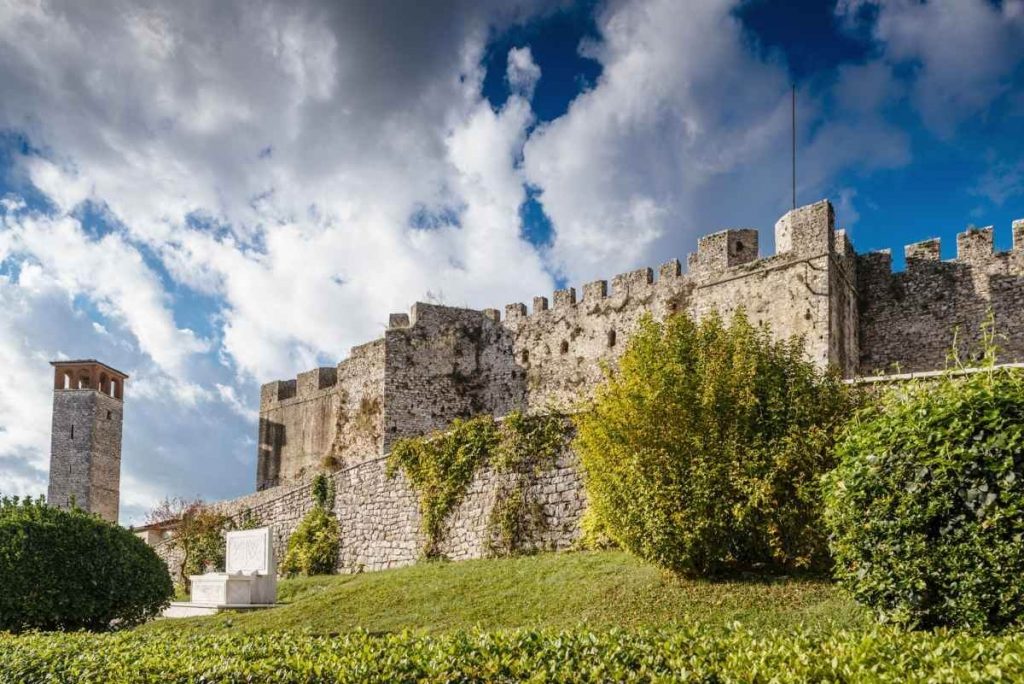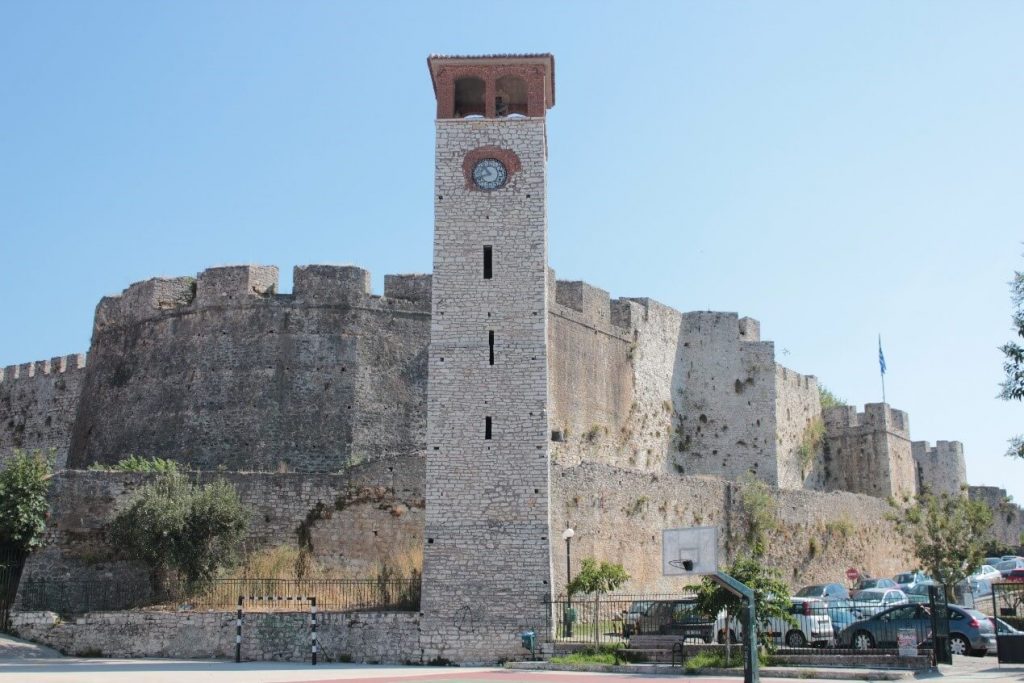The medieval Castle of Arta is probably one of the most impressive and well-preserved Castles of Greece. It is located on a low hill in the Northeast side of Arta, near the river Arachthos, and is visible from all sides of the city. The location where it was built was not chosen randomly, since, from antiquity, the Corinthian settlers who founded the ancient city of Amvrakia had erected its fortification on the foot of the same hill. Parts of the ancient defensive wall had been integrated into the medieval Castle’s structure and were saved to this day both in its eastern and northern sectors.

The construction of the Castle cannot be accurately dated, as it has undergone many modifications over the centuries. There are four different phases of construction of the Castle: the mid-Byzantine, the late-Byzantine, the Ottoman, and the modern period. The Castle reached its peak at the age of the Medieval State of Epirus, known as Despotate of Epirus when Arta became the administrative and military center of the whole Despotate. Michael II Komnenos Doukas (1206 – 1268 AD) who became sovereign of Despotate of Epirus (1230-1268 AD), in 1231 AD, one year after his marriage with Theodora Doukaina Petraleifa, patron Saint of Arta, strengthened and expanded the Castle of Arta, which then acquired the general form that it is preserved to this day.
The Castle has a trapezoidal shape and occupies 9 acres of land. At some points, its fortification reaches a height of 11 meters. It is enforced by 19 towers (of rectangular, semi-circular, polygonal, or triangular shape) and inside the walls, the inner walkway preserved that runs the whole length of the walls. Rectangular and semi-circular towers, as well as the ramparts, are dated in the Byzantine period, while polygonal and triangular towers are dated in the Ottoman period.
The Castle has two gates, one in the southern sector, which is the main entrance gate, and one in the northern sector, which is smaller. At the north gate, the byzantine walls were built on top of the ruins of the fortification of ancient Amvrakia, a fact indicated by the large perfectly well-placed stones, of which Anastasios Orlandos, Greek architect and historian of architecture, admired the ”aesthetic discipline”.
The Inner Acropolis of the Castle, the «Outs Kale» is on the southwest corner of the walls, to the left of the main gate, and is the last ‘’line’’ of defense in case of siege. Within the acropolis, three buildings are preserved. It is believed that one of them functioned as a prison, where General Ioannis Makriyannis, leader of the Greek War of Independence of 1821, was imprisoned. In honor of Makriyannis, a marble bust has been placed just outside the Castle.
In the Castle’s Acropolis, there is a Coat of Arms engraved on a well. It depicts the coat of arms of Charles I Tocco (1372 -1429 AD), who was the Earl of Kefalonia and Zakynthos islands and Despot of Epirus from 1416 AD until his death.

Ruins of a large Byzantine building are preserved inside the Castle, which probably was the multistory palace of the rulers of Despotate of Epirus.
Over the years, many popular travelers, scholars, and historians reported and described the imposing fortress. Rabbi Benjamin, a traveler from Tudela, Spain, who visited the city of Arta in 1165, first mentioned the Castle of Arta, and according to him, at that age, a hundred Jews lived inside the castle.
Outside the Castle, stands the Clock tower of Arta, the oldest clock in Epirus, which was built in the 17th century AD. Originally, the clock had Arabic numerals and operated mechanically and not electrically, a fact that has not changed to date.


